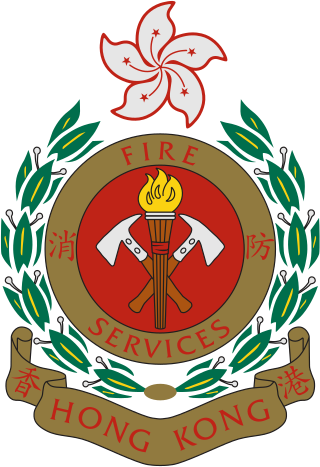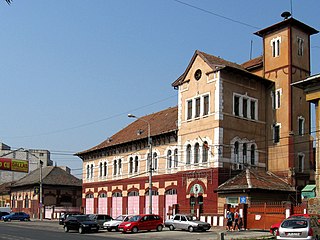The Incoterms or International Commercial Terms are a series of pre-defined commercial terms published by the International Chamber of Commerce (ICC) relating to international commercial law. Incoterms define the responsibilities of exporters and importers in the arrangement of shipments and the transfer of liability involved at various stages of the transaction. They are widely used in international commercial transactions or procurement processes and their use is encouraged by trade councils, courts and international lawyers. A series of three-letter trade terms related to common contractual sales practices, the Incoterms rules are intended primarily to clearly communicate the tasks, costs, and risks associated with the global or international transportation and delivery of goods. Incoterms inform sales contracts defining respective obligations, costs, and risks involved in the delivery of goods from the seller to the buyer, but they do not themselves conclude a contract, determine the price payable, currency or credit terms, govern contract law or define where title to goods transfers.

The Royal Albert Dock is a complex of dock buildings and warehouses in Liverpool, England. Designed by Jesse Hartley and Philip Hardwick, it was opened in 1846, and was the first structure in Britain to be built from cast iron, brick and stone, with no structural wood. As a result, it was the first non-combustible warehouse system in the world. It was known simply as the Albert Dock until 2018, when it was granted a royal charter and had the honorific "Royal" added to its name.

A wrecking yard, scrapyard or junkyard is the location of a business in dismantling where wrecked or decommissioned vehicles are brought, their usable parts are sold for use in operating vehicles, while the unusable metal parts, known as scrap metal parts, are sold to metal-recycling companies. Other terms include wreck yard, wrecker's yard, salvage yard, breaker's yard, dismantler and scrapheap. In the United Kingdom, car salvage yards are known as car breakers, while motorcycle salvage yards are known as bike breakers. In Australia, they are often referred to as 'Wreckers'.

The Hong Kong Fire Services Department is an emergency service responsible for firefighting and rescue on land and sea. It also provides an emergency ambulance service for the sick and the injured and gives fire protection advice to the public. It is under the Secretary for Security who heads the Security Bureau.

The London Fire Brigade (LFB) is the fire and rescue service for London, the capital of the United Kingdom. It was formed by the Metropolitan Fire Brigade Act 1865, under the leadership of superintendent Eyre Massey Shaw. It has 5,992 staff, including 5,096 operational firefighters and officers based at 102 fire stations.

The London Salvage Corps was maintained by the fire offices of London. The corps was first formed in 1865 and began operations in March 1866. It was inspired by the Liverpool Salvage Corps which had been formed in 1842, to reduce the loss and damage caused by fires, to help mitigate the effects of fire and of fire-fighting and to salvage both premises and goods affected by fire.

The New York Fire Patrol (FPNY) was a salvage corps created by the New York Board of Fire Underwriters which operated from 1839 until October 15, 2006. Their original mission was two-fold: to discover fires and to prevent losses to insured properties. The Patrol responded primarily to fires at commercial structures, however they would respond to high loss residential fires at times. During the fire the Patrol would spread canvas salvage covers, remove water, operate elevators, and secure utilities. The New York Fire Patrol was organized under the International Association of Fire Fighters (IAFF) labor union as Local I-26.

The great fire of Gateshead and Newcastle was a tragic and spectacular series of events starting on Friday 6 October 1854, in which a substantial amount of property in two North East England towns was destroyed in a series of fires and an explosion which killed 53 and injured hundreds. There is only one building still extant on the Newcastle Quayside which predated the fire.
The history of fire safety legislation in the United Kingdom formally covers the period from the formation of the United Kingdom of Great Britain and Ireland in 1801 but is founded in the history of such legislation in England and Wales, and Scotland before 1708, and that of the Kingdom of Great Britain from 1707 to 1800.

The Underwriter's Salvage Corps in Cincinnati, Ohio was created and operated by the Underwriters Association, a syndicate of Cincinnati-based fire insurance companies, for the purpose of reducing financial losses to their companies from claims due to building fires by providing a company of trained men with proper equipment to work in conjunction with the city fire department to protect life, structures and their contents from fire, smoke damage, and damage from the water that was used to fight the fire. The Salvage Corps worked to save and protect the structure and its contents while the city fire department concentrated on rescuing persons from the burning structure and extinguishing the flames. The Salvage Corps provided this service to all property owners without charge, whether they were insured or not.
North Mersey station opened on 27 August 1866 as the terminus of the North Mersey Branch of the L&YR. The station was for goods only and initially there was an extensive goods yard at the foot of the descent down to river level and alongside the slope. A four-storey warehouse, loading mound and goods sheds was constructed between 1881 and 1884.
Salvage Corps came into existence in the 19th century. With the growth of cities, fires and insurance, underwriters in several cities established fire fighting services to reduce losses. As municipal fire brigades became more competent in the 20th century, the private fire companies cut back their services and emphasised salvaging property after the regular firemen had done their job.
Manchester Oldham Road station opened in 1839 as the terminus station of the Manchester and Leeds Railway (M&LR) in Collyhurst, Manchester. When the M&LR opened Manchester Victoria in 1844 as its new Manchester passenger station Oldham Road was converted to a goods station which it remained until its closure in 1968.

Pyronaut is a specialised form of fireboat known as a fire-float. It was built in 1934 by Charles Hill & Sons Ltd., Albion Dock Bristol, Yard No. 208. Registered number 333833. She is owned by Bristol Museums and based at M Shed in Bristol's Floating Harbour.
The Kilbirnie Street fire, on Friday 25 August 1972, was a warehouse fire in the Port Eglinton area, on the south side of Glasgow, Scotland, which killed seven Glasgow Fire Service firemen in a flashover while they were trying to rescue a trapped colleague. What started as a routine industrial premises fire resulted in one of the highest losses of life for the UK Fire Service at a single incident in peacetime.

The 1861 Tooley Street fire, also called the Great Fire of Tooley Street, started in Cotton's Wharf on Tooley Street, London, England, on 22 June 1861. The fire lasted for two weeks, and caused £2 million worth of damage. During the fire, James Braidwood, superintendent of the London Fire Engine Establishment, was killed. House of Commons reports cited multiple failures in fire prevention, and the fire led to the 1865 Metropolitan Fire Brigade Act, which established the London Fire Brigade.
Glasgow Fire Service provided emergency services such as fire prevention, firefighting, emergency medical services and technical rescue to Glasgow, the largest city in Scotland and the third-largest city in the United Kingdom. On 16 May 1975, the Glasgow Fire Service was absorbed into the now defunct Strathclyde Fire and Rescue Service.
Chiswick was built at Batavia in the Netherlands East Indies for Dutch owners but quickly fell into British hands. She became a West Indiaman. The French captured her in 1804 but she quickly returned to British hands. She was wrecked at Aux Cayes in 1808. Her loss gave rise to an interesting case in cargo insurance.

The Iosefin Fire Station is a historical monument in Timișoara, Romania, designed by Hungarian architect László Székely in the so-called "1900s style". It was built in the Iosefin district, near the old fire station, on the site of the old watchtower. It is currently the headquarters of Timișoara Fire Department 2.

Glasgow Salvage Corps was a service in Glasgow, Scotland. It was founded after local fire insurance companies were concerned over losses in serious fires. They inspected buildings for fire safety, increasing premiums if any of their recommendations were not met, and attended fires alongside the Fire Brigade. It was founded in November 1873 and operated until the 1st of April 1984, when its functions were transferred to the Glasgow Fire Service. Similar salvage corps also operated in London and Liverpool.



















